4. Comparison of parallax images
Paper comparing various algorithms
The Middlebury Computer Vision Pages 's MRF Minimization page, well-known for computer vision benchmarks introduced in Article 2, includes `` A Comparative Study of Energy Minimization Methods for Markov Random Fields with Smoothness-Based Priors, IEEE Transactions on Pattern Analysis and Machine Intelligence (TPAMI), 30 (6): 1068-1080, June 2008 "is introduced. This paper is a detailed comparison of the energy minimization algorithms for the site labeling problem. It accurately describes what energy function was used and the number of labels.
And on the page of Result Tsukuba stereo , parallax images that are the results of algorithm execution for Tsukuba stereo images are introduced for each algorithm. The energy function used to minimize the energy of this Tsukuba stereo image seems to be as follows regardless of the algorithm. First, the data term is the sum of the absolute values of the differences for each RGB, which is exactly the same as Article 3. Next, the smooth term is truncated linear, with a difference censored at 2, and the coefficient is 40 if the pixel value change in the left image is less than 8, and 20 otherwise. This is much more complicated than article 3. It seems that you are trying to handle the troublesome label of parallax as well as possible. The number of labels is 16. The pixel-disparity model in article 3 uses 19 labels from parallax-10 to parallax-28, and the gaze_line-depth model uses 10 labels from depth-5 to depth-14 because depth is half the parallax. On the other hand, the compared algorithm and the resulting disparity file is
| abbreviation | description | disparity_file |
|---|---|---|
| ICM | Iterated Conditional Modes | tsu-ICM.png |
| Swap | graph cut, Swap move | tsu-Swap.png |
| Exp | graph cut, Expansion move | tsu-Expansion.png |
| BP-S | Belief Propagation, S version | tsu-BP-S.png |
| BP-M | Belief Propagation, M version | tsu-BP-M.png |
| TRW-S | Tree ReWeighted message passing, S version | tsu-TRW-S.png |
| GT | Ground Truth | tsukuba-truedispL.png |
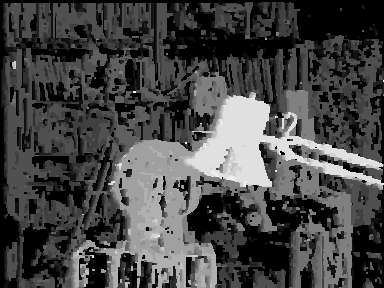
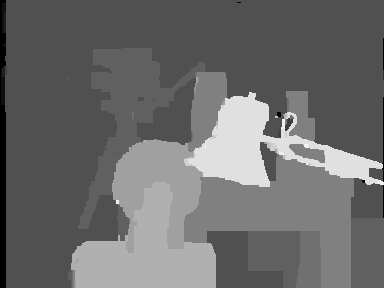
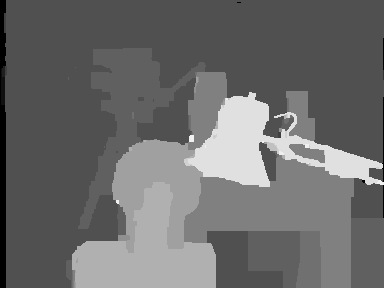
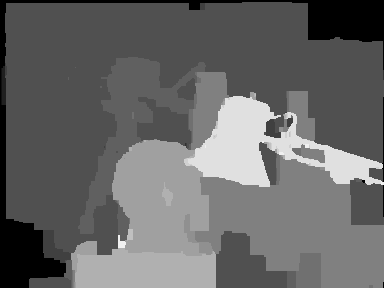
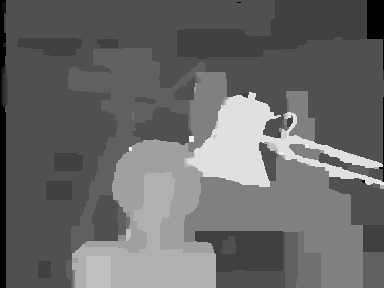

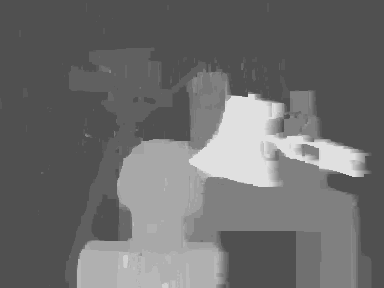
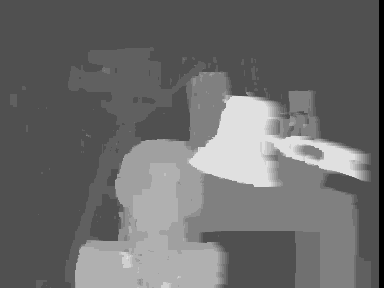
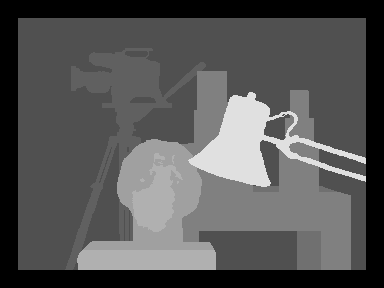

A program that simply compares parallax
I created a program compare_disparity.cpp that simply compares the parallax between two parallax files. This program compares the disparity of two disparity files for each pixel and sums the differences. However, when the parallax of the standard parallax file is 0, the parallax difference of that pixel is ignored. makefile If you also download
make do./compare true-disparity_file disparity_fileComparison result
The comparison result with the modified true parallax image true.png created in Article 2 is
| abbreviation | description | disparity_file | difference |
|---|---|---|---|
| ICM | Iterated Conditional Modes | tsu-ICM.png | 3118976 |
| BP-S | Belief Propagation, S version | tsu-BP-S.png | 691440 |
| BP-M | Belief Propagation, M version | tsu-BP-M.png | 430864 |
| Expansion | graph cut, Expansion move | tsu-Expansion.png | 338960 |
| Swap | graph cut, Swap move | tsu-Swap.png | 334416 |
| TRW-S | Tree ReWeighted message passing, S version | tsu-TRW-S.png | 329920 |
| DIS | pixel-DISparity model | disparity14.png | 249344 |
| DEP | gaze_line-DEPth model | pen_14_inh_1023.png | 216336 |
| GT | Ground Truth | tsukuba-truedispL.png | 0 |
